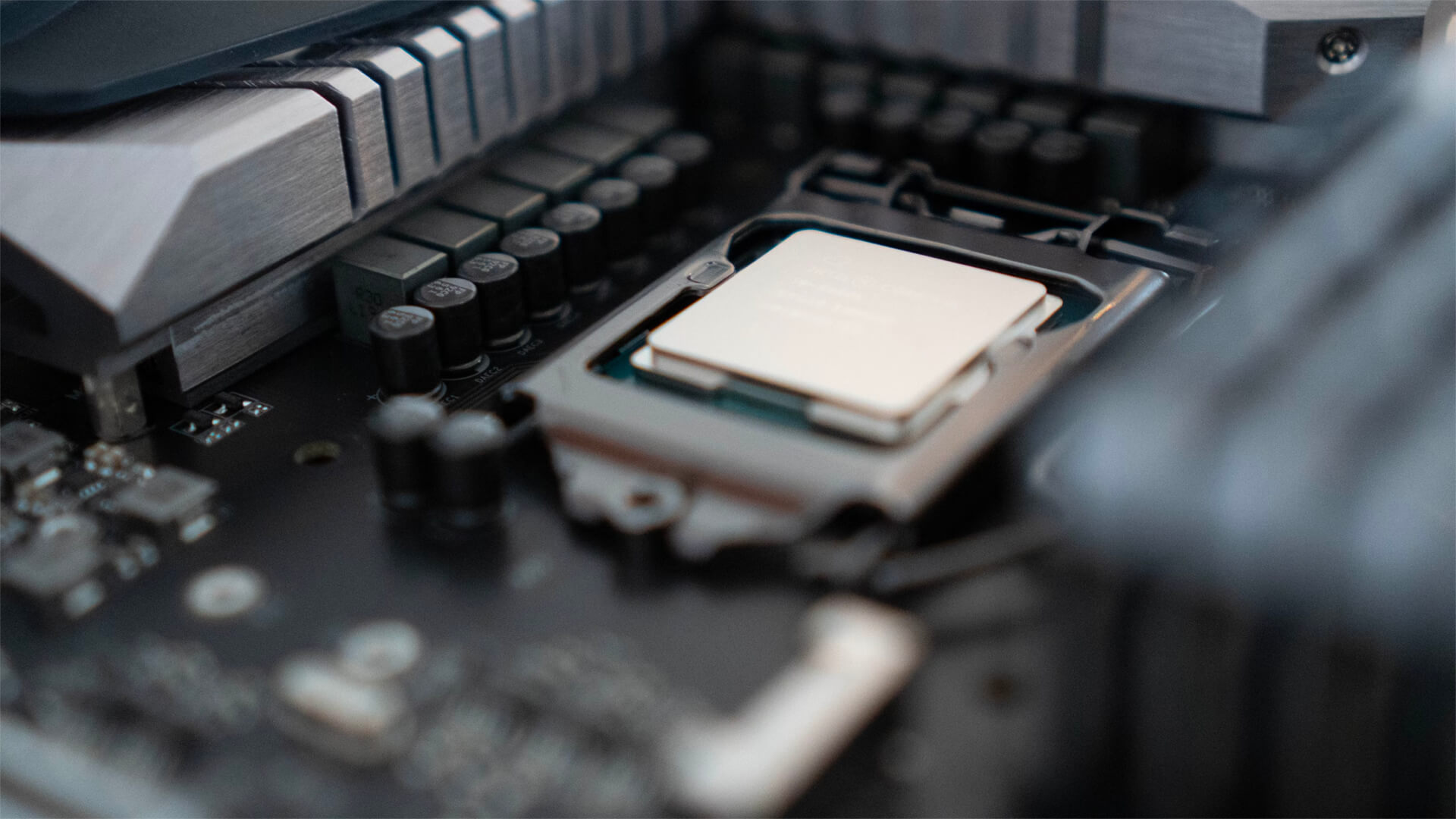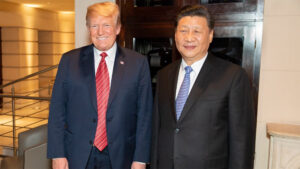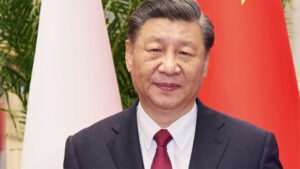The Chinese telecom firm Huawei (the same firm that was caught modifying equipment on behalf of the Chinese government) has released a new phone with a seven-nanometer chip.
After some digging, it appears that this breakthrough is not as significant as I initially thought – and it comes down to what the Chinese have access to. They are using a process called deep ultraviolet (DUV) lithography, and while it gets the job done, its days are numbered in the cutting-edge field. Further, the unofficially reported yield rate Huawei achieved is nowhere near the industry standard.
The other process of creating these chips – extreme ultraviolet (EUV) lithography – is still only accessible to the Chinese via subsidies, poaching, and theft. So, I won’t be classifying the release of this phone as a “significant” breakthrough.
If the Chinese head down this path, it’s quite illuminating as to how far they’re willing to go for the sake of saving face. Should China keep this up, it’s just one more way they risk harming their position on the global stage.
Here at Zeihan On Geopolitics we select a single charity to sponsor. We have two criteria:
First, we look across the world and use our skill sets to identify where the needs are most acute. Second, we look for an institution with preexisting networks for both materials gathering and aid distribution. That way we know every cent of our donation is not simply going directly to where help is needed most, but our donations serve as a force multiplier for a system already in existence. Then we give what we can.
Today, our chosen charity is a group called Medshare, which provides emergency medical services to communities in need, with a very heavy emphasis on locations facing acute crises. Medshare operates right in the thick of it. Until future notice, every cent we earn from every book we sell in every format through every retailer is going to Medshare’s Ukraine fund.
And then there’s you.
Our newsletters and videologues are not only free, they will always be free. We also will never share your contact information with anyone. All we ask is that if you find one of our releases in any way useful, that you make a donation to Medshare. Over one third of Ukraine’s pre-war population has either been forced from their homes, kidnapped and shipped to Russia, or is trying to survive in occupied lands. This is our way to help who we can. Please, join us.
Transcript
Hey everybody. Peter Zeihan here coming to you from Phoenix, where it’s 180 bajillion degrees outside. So we’re into this one from inside. A lot of you have written in and honestly, I was pretty curious myself about something that’s going on in China with the telecommunications firm Huawei. Now, that is a firm that has stands accused or guilty early of trying to modify wireless equipment and cellular equipment for the wider world so that the Chinese government can have a cheap and easy inside.
And everyone’s communications. They got discovered by the Australians, the Australians basically, or everybody else. And now we’re dealing with widespread sanctions by led by the Americans, by participating by every major country in the world that does the production of cellular equipment. And it’s kind of course, their business model. Now, in the last month, they have released a new phone, which is the first in a while because it took them a while to do anything without the ability to import equipment from anywhere else.
And it has a seven nanometer chip in it. And for those of you who’ve been watching me for a while, I’ve said that there’s not a lot that the Chinese can do that’s better than 90 nanometers. That’s what they can do themselves without external help. And 28 nanometers because of sanctions is about the best they can hope for.
So seven obviously potentially a very big deal. So we took a little bit of time. We dug into the details. And the short version is I’m not as worried as I was when this first came out. And it has to do with what the Chinese have access to. There are two types of chipmaking styles. The first uses something called deep ultraviolet, and that’s what was used for this chip.
Now, this is an older technology that has a number of drawbacks. You basically have to customize your equipment and modify your equipment for each individual chip design. So every time you have a new design, you have to kind of overhaul your factory in your lithography system from the ground up. And the way that the Chinese have done this is basically pirating design details from TSMC and Taiwan and then hire you just a huge number of people to do some technology transfer.
And they basically, especially when sanctions kicked in, you just basically were told they have a bottomless budget to go out and build a SUB10 nanometer chip. And they did. And it cost them five times as much as it should have. And the chip that they end up making wasn’t that great because they couldn’t do the design, that information, those people, they weren’t able to hire away.
So it’s basically a crypto mining chip made with a little bit smaller etching, which means that for a phone it’s really not a great option. More importantly, you’ve probably, from the Dutch point of view, the Dutch are the ones who make this equipment is that this theft started well before the sanctions run, but sanctions have only been in place for two, maybe three years now.
This started five years ago. So it is the ultimate expression of what the Chinese can do with a bottomless supply of money and absolutely no business ethics and the ability to hire anyone they want, all of which is, you know, an under threat in the sanctions regime now. So, you know, kudos for being able to get something sub seven, but it’s only about as good as your average smart phone from maybe 2017 which which is not nothing, but it’s certainly not the breakthrough that some people seem to think it is.
The second sort of technology is called extreme ultraviolet, and that is what you do to do all the good chips and the leading edge chips. Now, especially the three in the five nanometers that most smartphone folks are wanting to put in their machines. This system is much more modular and you don’t have to redesign everything from the ground up.
So when it finally did come online, which which is just like four or maybe about four years ago, everyone was really excited because all of a sudden the time to target for bringing the design to production could be shrunk. Still talking months to years. But you don’t have to re fabricate everything within your facility every time you have a new chip design.
And so far it seems to be performing to snuff and it’s this sort of equipment that the Chinese can’t get at all, in fact, don’t have any of at all in the country. So the U.V., they were able to use the stuff that they had and buy stuff that was no longer restricted or that wasn’t restricted yet, combined with a huge amount of subsidies, combined with a lot of poaching.
And they were able to cobble together a phone that does use something that is technically sub10 millimeter, even though it doesn’t perform anywhere like that for a phone. The EUV is simply off the market for them and everyone else is moving forward. So from my point of view, this is really instructive. Think of it this way. Think of it like I had said, that the Chinese couldn’t build a television.
And I’m thinking of like those OLEDs that you hang on the wall that way, like £20 have a slight curve and the deep black and blah, blah, blah, blah. And the Chinese are like, Oh, we can totally built a TV. And they came out with like a 48 inch tube TV. It’s technically a TV. Technically, I was wrong, but under the terms of the technology, this is not something that really takes them forward.
If anything, this is a one off because they can’t use the stuff to advance because they don’t know how to make the better chips. And the reason that do you’ve was ultimately abandoned is by the time we get to about 15 nanometers, it was really skirting the edge of what you can do with physics because the wavelength for the light is wider than what you need to etch on the chip.
And they basically had to tweak the laws of physics to get down to seven, but that’s the upper threshold. But even doing something a little bit dumber than that, it’s not clear that the Chinese have the ability because they no longer have access to the expertize of the Dutch. So this is really, really illuminating to me for how far the Chinese are willing to go in order to say that they broke the sanctions, but they really did it.
There’s nothing about this that is home grown. There’s nothing about this that is replicable. In fact, there’s a possibility that may kind of fall into that category of stupid things that they’ve been doing lately in that you’ve got a number of people in the American Congress who are not interested in doing a week of research to figure out the details or just like, oh, always breaking sanctions.
Well, we’ll show them. We’ll just put it in front of the president, a bill that says that all technological transfers and sales to Huawei are now illegal. So not just the top, but stuff, everything. It’s Congress. Who knows how that’s ultimately going to shake out. But the Chinese are finding more and more ways to sacrifice their position on the altar of ego.
And it looks like this might be one more. All right, everyone, take care.








